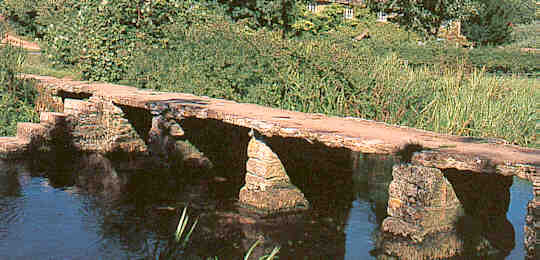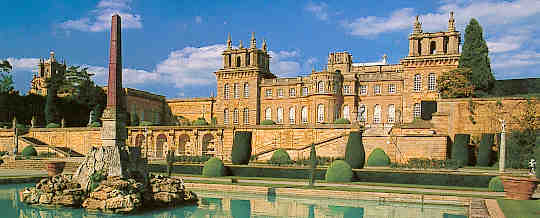|
The Cotswolds are a line of hills stretching from about 7 miles south of Stratford-upon-Avon in a south-westerly direction to Bath, a distance of 70 miles. It is bordered to the east by Banbury and Oxford and to the west by Cheltenham and Gloucester. Often described as an Area of Outstanding Natural Beauty, the largest in England and Wales. It is characterised by picturesque villages built of warm coloured limestone, sitting besides clear, fast flowing streams, set in a stunning landscape. So how did this all come about?
Millions of years ago a thick layer of sedimentary material was laid down to consolidate into a blue-grey coloured clay. Interspersed in the clay further deposits of silts and calcium carbonates were introduced to become layers of what we call marlstone slabs. This slab-like marlstone was quarried from early times and today can be seen providing the floors of old village pubs and ancient cottages. It was also used for making footbridges over streams and small rivers.
 |
In time shallow tropical seas, rich in life covered the clay. Over millions of years, sediments derived from the shells of marine organisms and from coral were formed to give limestone. In the Cotswolds this limestone deposit is high in shell and pebble content and is known as inferior oolite. If you look very closely at limestone you will find it is made up of tiny spherical particles, called ooliths, cemented together to form a texture rather like that of fish roe. Today it is used mainly in road building and lime burning.
In some areas, a further deposit covered the limestone. These were sediments linked to volcanic activity and were rich in material containing silica. It is called fuller's earth, a greenish-grey material resembling clay and having good absorbent properties. It is said that the Knights Templars, a religious military order, living at Barton near Guiting Power in the 13th century, discovered that fuller's earth was suitable for removing the oil and grease from fleeces. The cleaning process was known as 'fulling' and contributed to the success of Cotswold wool sold in Europe. This success brought wealth and much of this wealth was used in the construction of beautiful houses and churches, which we see today.
 |
180 million years ago saw the final layer of sedimentary deposits. This is called great oolite and is a fine material free of the deposits found in inferior oolite. In its pristine condition, it must have sat like a cap on the other layers. This limestone is much sought after and was used in the construction of the Oxford Colleges, St. Pauls Cathedral, Windsor Castle, the fine buildings of Bath, in fact its use is all around us today.
All these deposits had to be turned into hills and that happened when a great movement in the earth's crust caused it all to be tilted upwards, forming an escarpment on one edge. If you travel to the Cotswolds from the west today, it is obvious that you are approaching a line of hills, the Cotswold escarpment. It is not so obvious that you are entering hills when travelling from the east. In fact, we have had visitors calling at the Information Centre in Stow-on-the-Wold asking if they have arrived in the Cotswolds yet.
A feature of the Cotswolds is the lovely valleys nearly always with a small stream or river flowing in the bottom. Now you might wonder how these shallow streams and rivers cut such deep valleys. Well they didn't, that was done by ice scouring the landscape and later, the large amount of water running from the retreating ice.
Man was the final influence in the making of the Cotswolds. It was early man who built the hill top burial mounds and hill forts, who left the marks in the earth where his medieval villages had once stood, and later still, built our present villages, using local limestone, which perfectly fit into the landscape. It is this amalgam of man and nature that has given the Cotswolds its international standing and continues to draw people from all over the world.
Further facts about the Cotswolds see - Cotswolds Fact Sheet. |